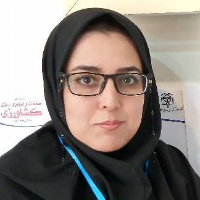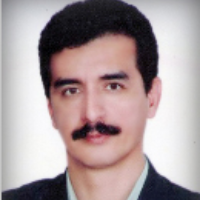The effect of Rice husk Biochar Application and Different Levels of water on matric potential, Biochemical characteristics and Water Use Efficiency of Cadmium Contaminated Soil in Tomato plant
In recent decades, the widespread use of chemical fertilizers, pesticides, and urban and industrial wastewater for irrigation has caused growing concern about heavy metals pollution in the environment and agricultural soils. Soil pollution with heavy metals and moisture stress are the main threats to food security in the world. Drought stress is considered one of the most severe abiotic threats to the food security of the world, and management methods to conserve irrigation water, such as deficit irrigation, are being developed and are among the solutions to improve the efficiency of water consumption. Tomato is one of the most popular agricultural products in the world due to its high nutritional value, as well as being a source of antioxidants, fiber, vitamins, potassium, phenolic compounds, lycopene, and beta-carotene. Given its high water requirement, it is necessary to use strategies in arid and semi-arid regions of the world to compensate for water scarcity and the resulting drought stress without reducing yield. Biochar, as an organic soil amendment, can be effective to reduce the effects of water deficiency and change the activity of plant enzymes grown in an environment contaminated with heavy metals, especially cadmium. The aim of this study was to investigate the effect of rice husk biochar and deficit irrigation on matric potential and biochemical characteristics of tomato plants in soil contaminated with cadmium.
The soil sample was collected at a depth of 30 cm from the Faculty farm. Rice husk was used to prepare Biochar. To produce biochar, oven-dried remains of the rice husk were placed in an electric furnace at a temperature of 400°C for 4 hours with a temperature increase rate of 5°C per minute. This research was performed in a factorial-based experiment in a randomized complete block design using three levels of rice husk (0 (B0), 3 (B3), and 6 (B6) ton/ha) and seven irrigation levels (50 (L50), 60 (L60), 70 (L70), 80 (L80), 90 (L90), 100 (L100), and 110 (L110) percent) with four replications in cadmium-contaminated soil with a total of 21 treatments in 84 pots. Tomato seedlings (Hirad variety) were cultivated in the greenhouse, and after 21 days, the seedlings were transplanted to the main pots. After mixing soil and biochar and adding the mixture to the pots, the pots were fully saturated. Soil moisture was adjusted at the field capacity level, then two tomato seedlings, 10 cm tall in the aerial part, were planted in each. In order to prevent nutritional stress, the amounts of required nutrient elements of nitrogen, phosphorus, and potassium were calculated based on the soil test results, and 500, 150, and 200 kg per hectare of urea, triple superphosphate, and potassium sulfate were added, respectively, to the soil of the pots before transplanting tomato seedlings. The application of different irrigation levels started three weeks after transplanting the seedlings to the main pots, after ensuring the complete establishment of the plants; it continued once every three days for 120 days until the end of the growth period. Then, the results of rice husk biochar application and different levels of water application on soil matric potential, biochemical characteristics and water use efficiency of tomato plants in cadmium contaminated soil were investigated. The data were analyzed using version 9.2 of SAS, and the graphs were drawn in Excel. Duncan's test was used to compare means, and the significance level was set at 0.05.
Studying the matric potential of the soil under the influence of biochar treatments showed that the matric potential increases FC, PWP and PAWC with the increase of biochar application in the B6 treatment. The moisture content of treatment B6 increased by 28.50% and 123.48%, respectively, compared to B3 and B0 in PAWC. The results showed that the Cd concentration absorbable to soil decreased with increasing irrigation and biochars application. The lowest cadmium concentration was observed in the B6 treatment at the irrigation level of 110 %. However, soil available cadmium values in the L90B6, L100B6, and L110B6 treatments were not significantly different. According to the results, the amount of cadmium in treatment B6 in L90, L100, and L110 decreased by 24.3%, 27.9%, and 34.2%, respectively, compared to treatment B6 in L50. Ion exchange can be one of the reasons for the stabilization of heavy metals in the soil due to biochar application. In addition, properties of soluble solids and vitamin C of tomato fruit increased significantly by reducing irrigation levels and increasing of biochar application. So, the properties of soluble solids and vitamin C of tomato fruit were 68.9% and 65.3% higher in L50B6 treatment compared to L110B0 treatment, respectively. On the other hand, catalase enzyme activity decreased significantly with increasing irrigation levels and biochar application. The catalase enzyme increase in L50B0 treatment compared to L110B6 treatment reached its maximum and was 1.2 times. The highest values of total chlorophyll and carotenoid were obtained in L110B6 treatment, which were 29.4% and 93.8% higher than L110B0, respectively. The best water use efficiency was observed in L90B6 and L100B6 treatments with 65.23 and 63.14 kg/m3, respectively, and the difference between them was not significant. Although the duration of the research was short and the experiments were conducted immediately after the end of the tomato growing season (after 4 months), but the biochar obtained from rice husk improved the physical conditions of the soil. Indeed, by reducing soil cadmium toxicity, biochar, especially in the B6 treatment, made the plant immune to cadmium stress. The B6 treatment at the irrigation level of 90% (L90B6) was recognized as the best treatment in terms of optimal maintain soil moisture, minimum cadmium concentration in the soil, and minimum water consumption during stages of the plant growth. Therefore, biochar application can be an economic solution to improve soil water retention, plant biochemical characteristics, and water use efficiency under water stress conditions in arid and semi-arid regions and soil cadmium contamination.
- حق عضویت دریافتی صرف حمایت از نشریات عضو و نگهداری، تکمیل و توسعه مگیران میشود.
- پرداخت حق اشتراک و دانلود مقالات اجازه بازنشر آن در سایر رسانههای چاپی و دیجیتال را به کاربر نمیدهد.



